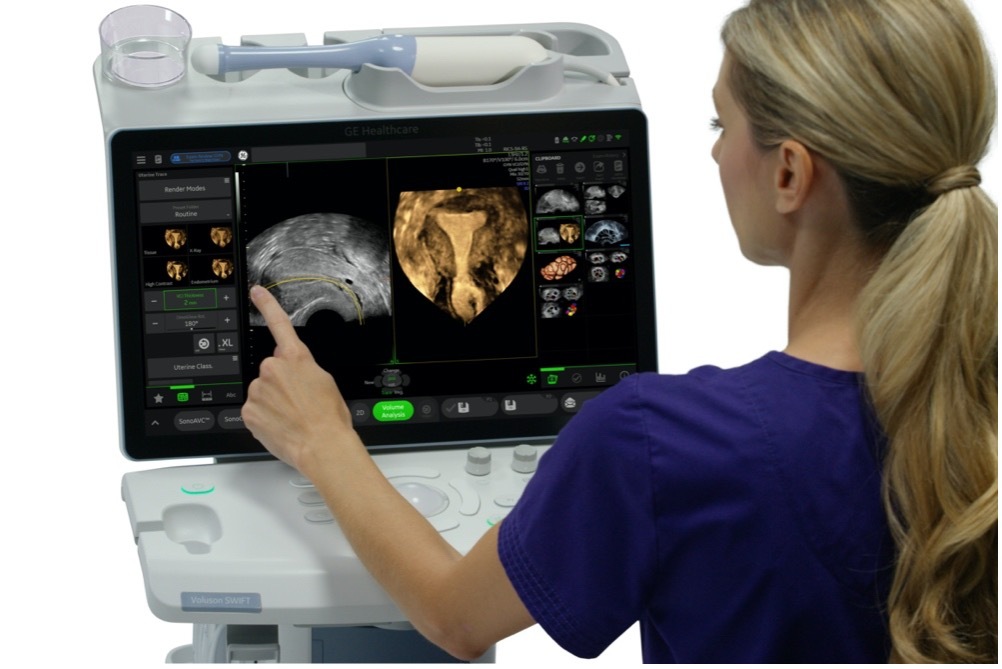Many common menopause symptoms can bring patients into their OB/GYN's office for evaluation and treatment, including vaginal dryness, mood changes and irregular bleeding. Ultrasound technology remains a valuable tool for clinicians in the assessment of various menopause symptoms, particularly when it comes to postmenopausal bleeding.
Besides aiding in diagnosing menopause and evaluating symptoms, ultrasound can also play an important role in evaluating the effects of hormone replacement therapy and treating signs of early menopause.
To mark World Menopause Month (or at any other time of the year), clinicians should update and expand their knowledge of how the latest ultrasound innovations can help them assess and treat this patient group.
The Role of Ultrasound in Evaluating Menopause Symptoms: Postmenopausal Bleeding
After a patient has stopped menstruating, the experience of bleeding can be an alarming one. Abnormal bleeding occurs in more than 90 percent of people with endometrial cancer, according to the American Cancer Society. However, bleeding can have a variety of causes, and only a small fraction of instances will result in a cancer diagnosis. Other causes of postmenopausal bleeding include the following:
- Use of hormone replacement therapy
- Thinning and atrophy of the endometrium and vagina that typically accompany menopause
- Endometrial polyps
- Uterine fibroids
- Endometrial hyperplasia
- Infections of the uterus or cervix
Due to the possibility of cancer, clinicians need to evaluate bleeding and determine its cause as quickly and precisely as possible. Transvaginal ultrasound is a first-line technique for identifying the causes of postmenopausal bleeding — adding 3D ultrasound can make evaluation even more effective. This approach allows clinicians to accurately measure endometrial thickness, a key differentiator in cases of uterine cancer.
For example, one study published in Medicine examined 144 patients with an endometrial thickness of greater than 4 mm and concluded that transvaginal 3D power Doppler ultrasound is valuable in differentiating benign and malignant endometrial lesions. Newer ultrasound models with built-in measurement guides, scan protocols and user tutorials aim to make this differentiation even easier.
Diagnosing and Navigating Early Menopause
Early menopause, defined as menopause that occurs between the ages of 40 and 45, affects approximately five percent of women. The symptoms are the same as those that occur when menopause happens at an expected age. However, the causes are numerous and can include a family history of this condition, smoking, autoimmune disorders and chemotherapy or radiation.
3D ultrasound can be useful both in diagnosing early menopause and in answering patients' questions about fertility. Fertility specialists can use ultrasound to assess ovarian reserve and obtain an automated follicle count for those who are in early perimenopause.
Evaluating the Effects of Hormone Replacement Therapy
Some people seek hormone replacement therapy as a way to address menopause symptoms such as hot flashes and vaginal atrophy. The use of hormone replacement therapy continues to change as ongoing research identifies various risks and benefits associated with this approach. OB/GYNs can help educate patients about the latest findings on hormone replacement therapy and help them to weigh the risks and benefits.
Some evidence suggests that systemic estrogen-only hormone replacement therapy is associated with an increased risk of endometrial cancer. Although estrogen-progestin hormone replacement therapy does not appear to increase the risk of endometrial cancer, it has been linked to a greater likelihood of abnormal vaginal bleeding in patients after menopause. Research shows that transvaginal 3D ultrasound is a useful tool for monitoring postmenopausal bleeding and evaluating the endometrium in patients who are prescribed hormone replacement therapy.
Designing 3D Ultrasound Technology for Ease of Use
With so many potential uses for ultrasound technology in assessing menopause symptoms, OB/GYNs need ultrasound systems that make evaluation and diagnosis as quick, simple and accurate as possible. Newer machines show promise in making this dream a reality by incorporating state-of-the-art capabilities into streamlined systems. Such features may include applications that simplify the acquisition and display or the coronal plane of the uterus for a more thorough evaluation of the endometrium. Small ergonomic designs with simple operations such as touchscreen-based operations can make ultrasound easier to learn, use and incorporate into your practice.
Clinicians may also want to look for 3D ultrasound systems that promote enhanced functionality and ease of use — menu customization and simplified 3D volume manipulation with touch are examples of features that can further simplify use. These intuitive and personalized systems can make a significant difference in the ability of OB/GYNs to perform accurate and efficient 3D transvaginal ultrasonography on not just peri/post-menopausal patients but can also add additional benefits to gynecological exams.
Ultrasound: A Valuable Tool in Assessing Menopausal Symptoms
Menopause and its various symptoms are common concerns for OB/GYN patients. Transvaginal 3D ultrasound technology is a preferred approach for evaluating postmenopausal bleeding in these patients and ruling out endometrial cancer and other causes. It is also a valuable tool for assessing other issues related to menopause, such as the possible effects of hormone replacement therapy on the endometrial lining.
To increase efficiency and make this technology part of daily routine assessments, clinicians should consider choosing newer 3D ultrasound systems that incorporate user-friendly features, including touchscreens, guided task lists and improved ergonomics. By doing so, OB/GYNs can help ensure that patients leave their offices with greater peace of mind.

Uterine Trace imaging software on Voluson™ SWIFT
Interested in learning more about ground-breaking ultrasound technology? Learn More About the Voluson™ SWIFT.



